Silviculture Objective(s)
To create and maintain a structurally and compositionally complex uneven-aged stands dominated by non-ash canopy tree species, including current climate-adapted (e.g., northern white cedar, red maple, yellow birch, and American elm) and future climate-adapted (swamp white oak, hackberry) species. Black ash will remain a canopy tree species in the near-term, but will be preferentially removed in group selection harvest entries over the next four cutting cycles and replaced via planting and ultimately from natural seeding of other species.
Pre-treatment stand description and condition
Stand establishment and management history:
The stands in this large black ash wetland complex in 2010 were similar to many WFn55 and WFn64 communities in the region with no history of active management. Maximum black ash canopy tree ages ranged from 150 to 274 years; however, stands were strongly uneven-aged with distinct recruitment periods corresponding to past gap-scale disturbance events, including drought in the 1930s and recent mortality of canopy American elms in the 1980s. Black ash represented 80-95% of pre-treatment basal area, with minor components of American elm, basswood, and trembling aspen. Other species found locally at low levels of abundance were balsam fir, bur oak, and balsam poplar. Black ash was found across all size classes, whereas most other canopy tree species were < 12 inches DBH. Relative to other black ash-dominated ecosystems in the region, these areas were quite healthy in regards to the degree of black ash crown dieback and decline documented; however, Dutch elm disease was prevalent throughout the stands. Given the considerable acreage of black ash forest wetlands across the Chippewa National Forest (CNF), the objectives for these areas were to reduce the stand and ownership-level vulnerability of this resource to EAB. This experiment reflects the genesis of several years of trials and discussions led by Gary Swanson, silviculturist on the CNF, aimed at proactively managing ash stands to increase their resilience to EAB by diversifying tree species.
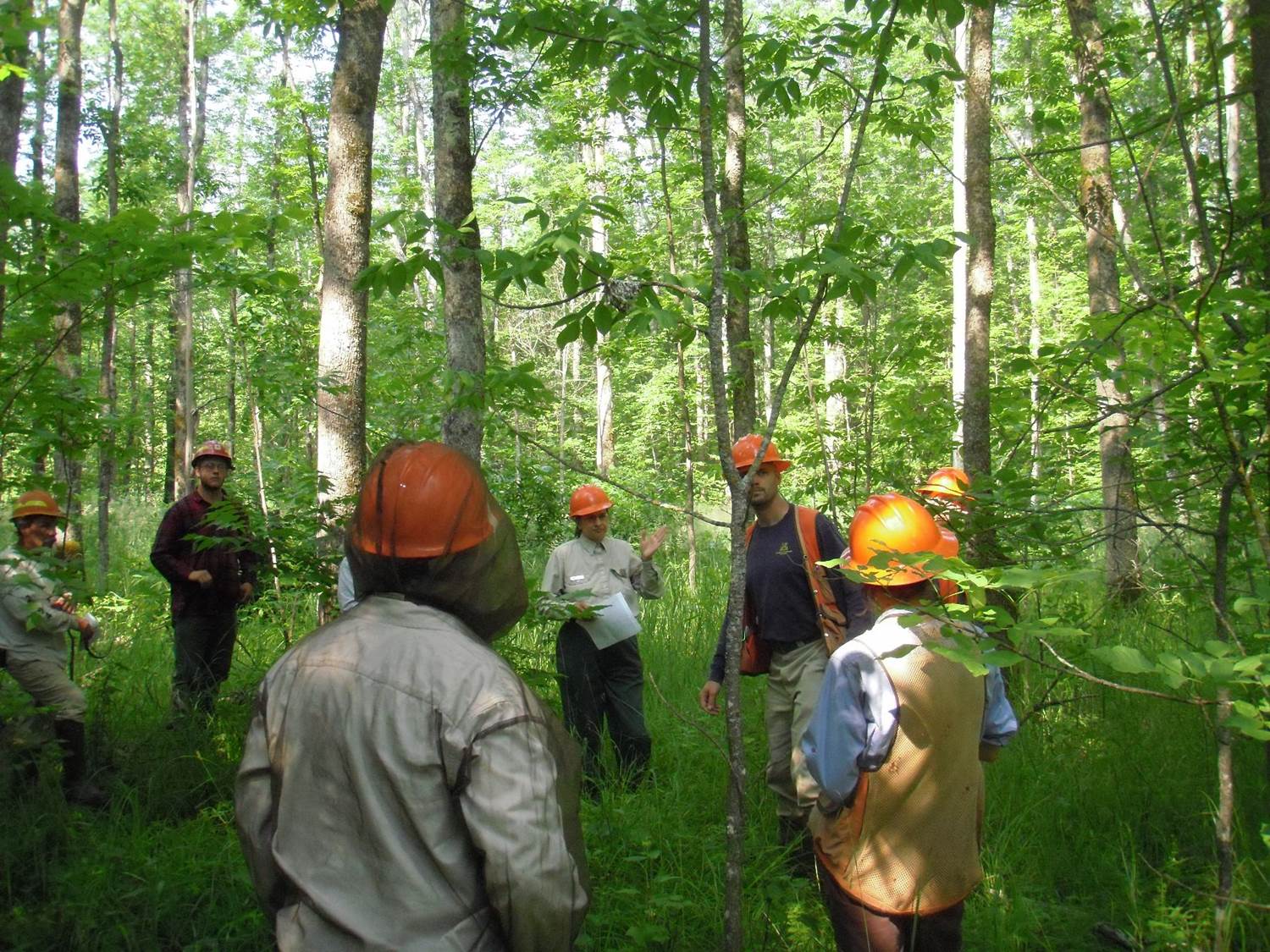
Figure 1: Staff from USFS Northern Research Station and Chippewa National Forest in black ash swamps prior to treatment
Silviculture Prescription
This experiment includes four different treatments (no-harvest control, simulated EAB infestation, clearcutting, and group selection); however, the following description is focused mostly on the group selection prescription given the initial effectiveness of this approach. Results from other treatments are provided in the following sections to serve as points of contrast regarding options for managing black ash systems.
Create 0.1 acre group selection openings throughout 20% of the stand removing all black ash but reserving individuals of other canopy tree species should these be present. Harvest during frozen ground conditions. Plant each harvest gap with 12 potential black ash replacement species at approximately 100 TPA per species. Replacement species included northern white cedar, tamarack, black spruce, swamp white oak, hackberry, red maple, yellow birch, American elm (Valley Forge variety), balsam poplar, cottonwood, trembling aspen, and Manchurian ash and there will be no site preparation or plan for protection. Note that the native range of hackberry and swamp white oak is currently located to the south of the treatment areas. Planted stock will be assessed at multiple time intervals over the length of the experiment. Treatment sequence will be repeated in 15-20 years in unharvested portions of stand.
What actually happened during the treatment
Fall 2010: Timber was appraised and treatments were laid out by Doug Kastendick from the USFS Northern Research Station and the stumpage was sold to CO Johnson Logging, Inc.
Summer 2011: Permanent plots were installed for pre-treatment measurement of regeneration, understory plant species, and overstory trees. In addition, permanent monitoring wells were installed in each treatment unit for measuring water table responses to treatments and black ash mortality.
Fall 2011: Half of the seedlings were planted in the September-October prior to harvest to evaluate the potential for underplanting ash replacement species prior to EAB or overstory treatments. All seedlings were containerized stock, with the exception of swamp white oak, Manchurian ash, and cottonwood. Note American elm was large stock (0.5 gallon pots). Rationale for the fall planting was to take advantage of “drier” planting conditions in fall, which would allow for evaluation of suitable planting microsites.
Winter 2012: The stand was harvested by Clarence Johnson of Black Duck, MN with a cut-to-length processor and forwarder. A lack of snow cover allowed for solid, frozen ground conditions and logging operations began in early January and ended in March. This lack of snow cover also had a negative impact on seedling survival due to lack of protection from exposure, browse, and machine traffic. Plots simulating EAB mortality were also girdled during this period (and again in Winter 2013)
Spring 2012: The remainder of the seedlings was planted in May-June.
Summer 2012-2014: Regeneration, understory vegetation, and hydrologic data were collected for three seasons post-treatment by field crews led by Mitch Slater from the USFS Northern Research Station with additional long-term measurements ongoing. Upcoming treatments will include released treatments around planted seedlings in Summer 2015. See Figures 1-6.
Post-treatment assessment
2015 Assessment
Table 1. Three-year average survival rates (%) for planted seedlings.
| Species | Clearcut | Control | Girdle | Group |
| red maple | 14.7 | 33.3 | 29.6 | 33.5 |
| yellow birch | 0.3 | 3.9 | 4.9 | 6.5 |
| hackberry | 17.3 | 76.7 | 66.1 | 51.6 |
| Manchurian ash | 56.5 | 74.4 | 84.4 | 78.3 |
| tamarack | 8.1 | 8.1 | 7.3 | 14.8 |
| black spruce | 11.4 | 17.4 | 24.9 | 22.7 |
| balsam poplar | 39.3 | 28.5 | 31.2 | 45 |
| cottonwood | 11.6 | 5.3 | 10.9 | 16 |
| trembling aspen | 7.6 | 0.3 | 3.2 | 8.4 |
| swamp white oak | 68.2 | 83.2 | 74.4 | 76.5 |
| white cedar | 4.2 | 16.1 | 15.5 | 13.8 |
| American elm | 31.8 | 93 | 91.3 | 87 |
| Overall | 22.1 | 32.9 | 33.3 | 34.5 |
Overall survival of planted non-ash seedlings was low, with average three-year survival rates across treatments of 32 and 29% survival for fall and spring planting, respectively. Survival rates were significantly lower in clearcutting treatments (22.1%) compared with group selection treatments (34.5%). Regardless of treatment, swamp white oak, American elm, hackberry, and Manchurian ash had the highest survival rates (Table 1). The native species with the highest survival rate in the group selection treatment was American elm (87%), followed by balsam poplar (45%) and red maple (33.5%). Swamp white oak (76.5%), hackberry (51.6%), and Manchurian ash (78.3%) also had high survival rates in this treatment. In general, for species with high survival, fall planting generally had higher survival than spring planting (Note balsam poplar, swamp white oak, and Manchurian ash were planted the fall after harvest).
Table 2. Natural regeneration (trees ac-1) following treatments.
| Species | Clearcut | Control | Girdle | Group |
| black ash | 2518 | 1336 | 1724 | 182 |
| American elm | 247 | 254 | 334 | 191 |
| basswood | 28 | 112 | 141 | 4 |
| aspen | 58 | 4 | 176 | 0 |
| burr oak | 232 | 4 | 88 | 18 |
Natural regeneration following the group selection treatments was dominated by American elm and black ash stump sprouts. A small amount of bur oak and basswood were also recruited in group openings.
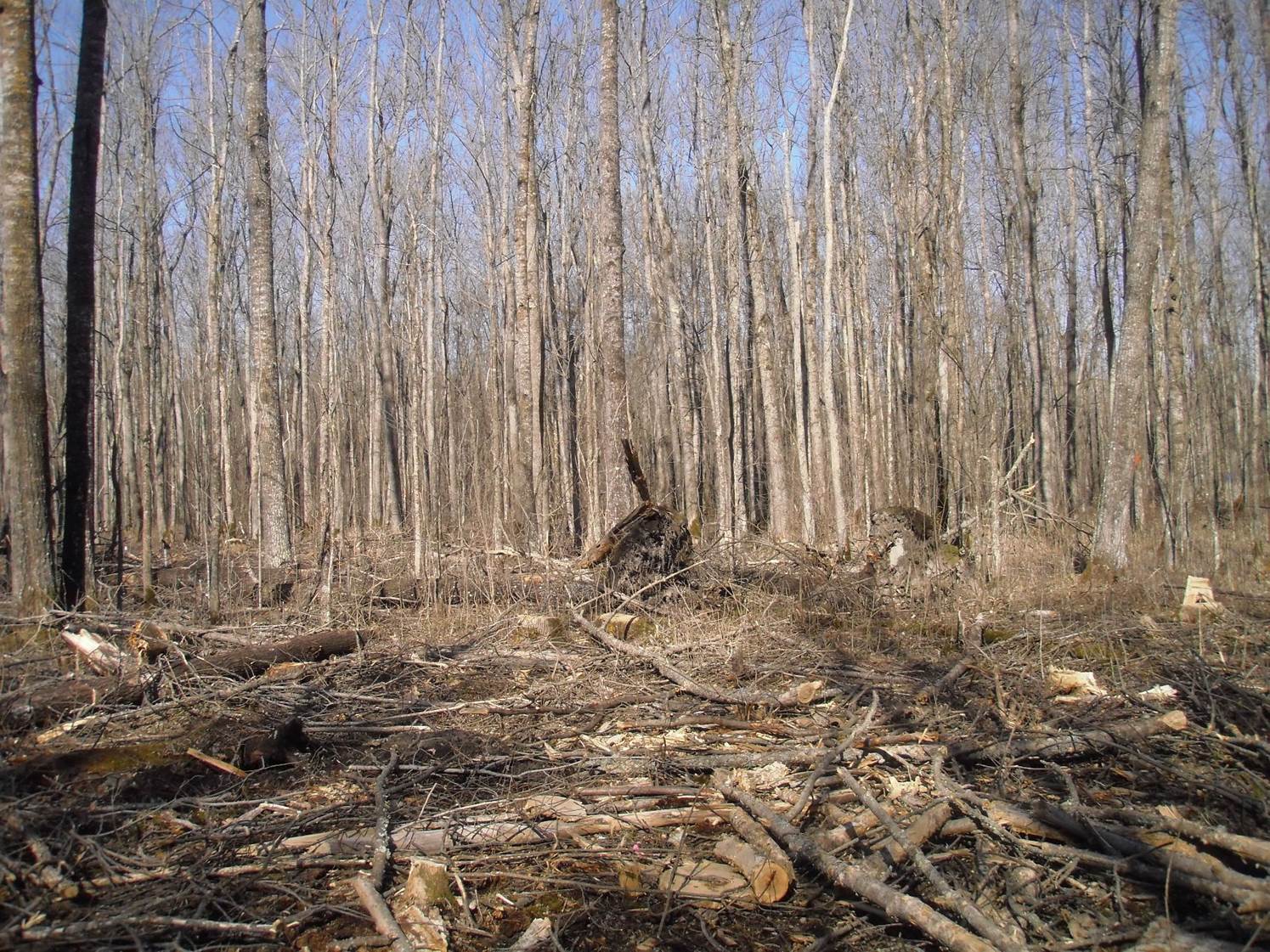
Figure 2: Group selection harvest immediately post treatment (2012)
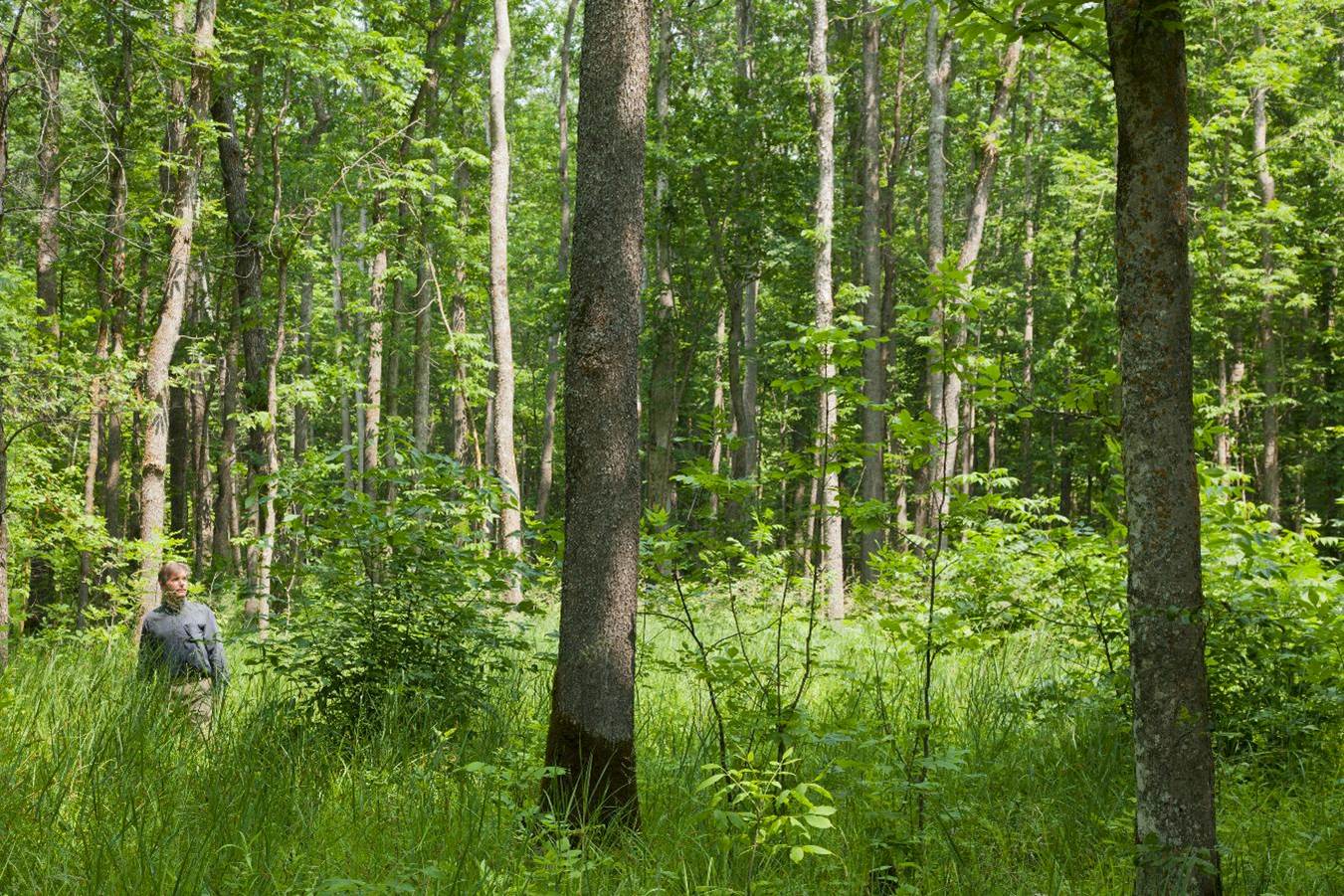
Figure 3: Group selection harvest two years post-treatment (2013)
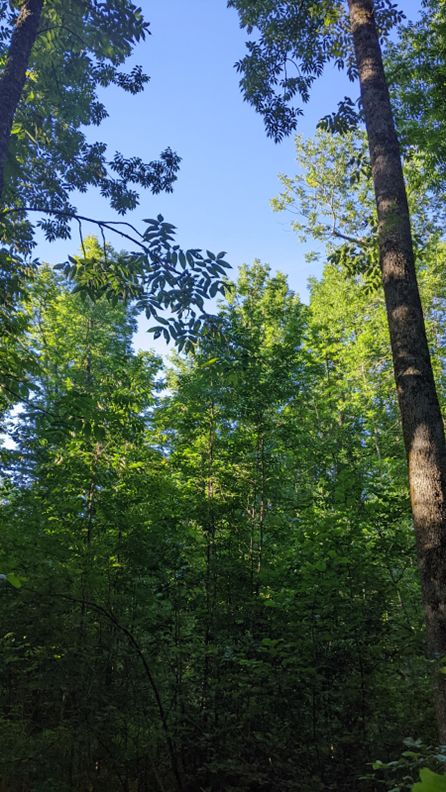
Figure 2024-6: Group Selection opening 10 years following creation.
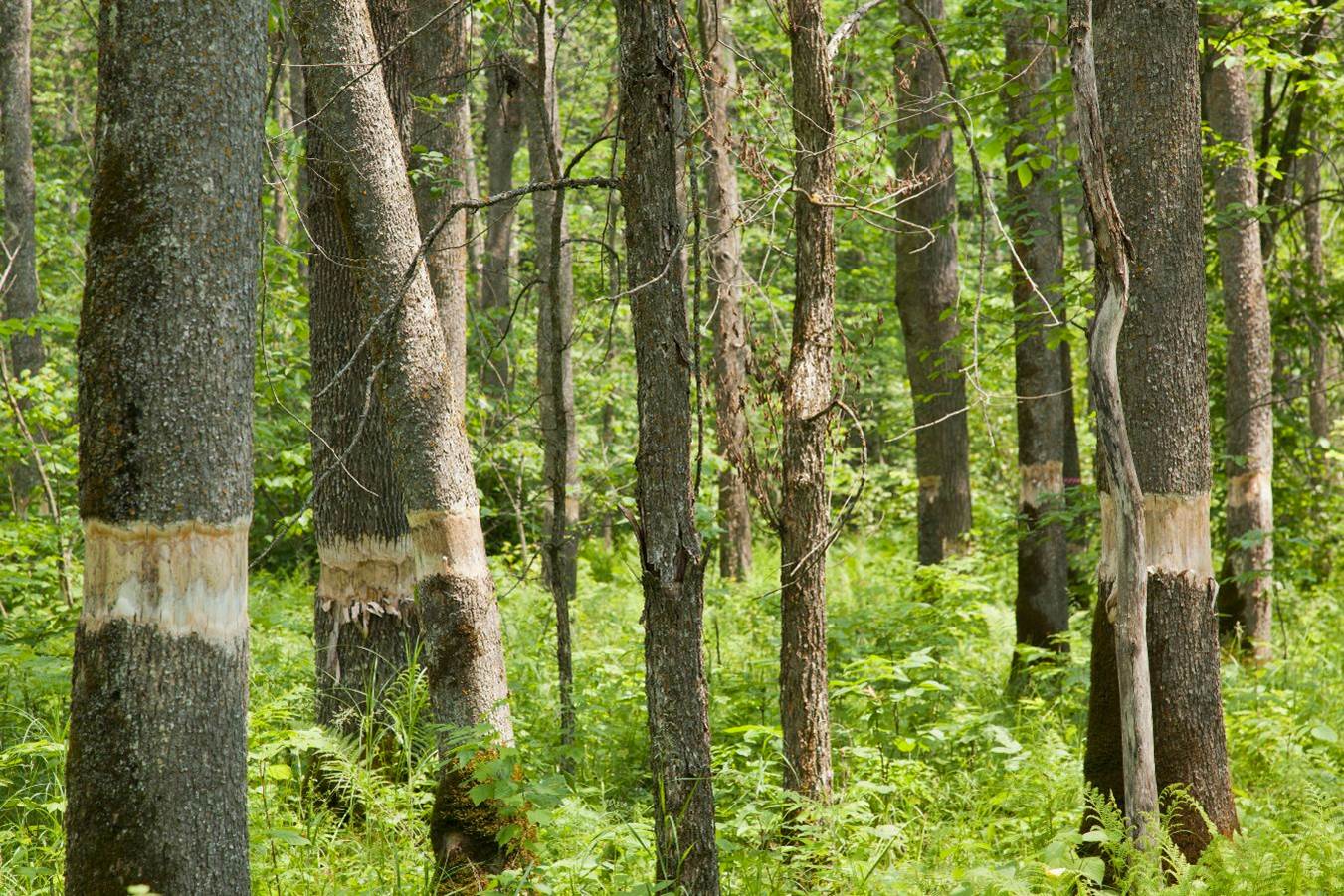
Figure 4: Girdle (EAB infestation) treatment two years post-treatment (2013)
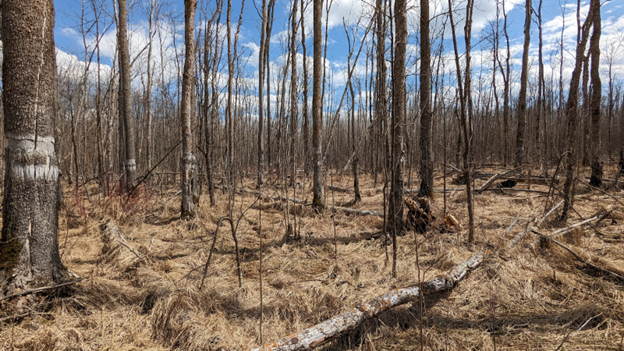
Figure 2024-7: Girdle treatment illustrating a dramatic increase in graminoid cover by 2023.
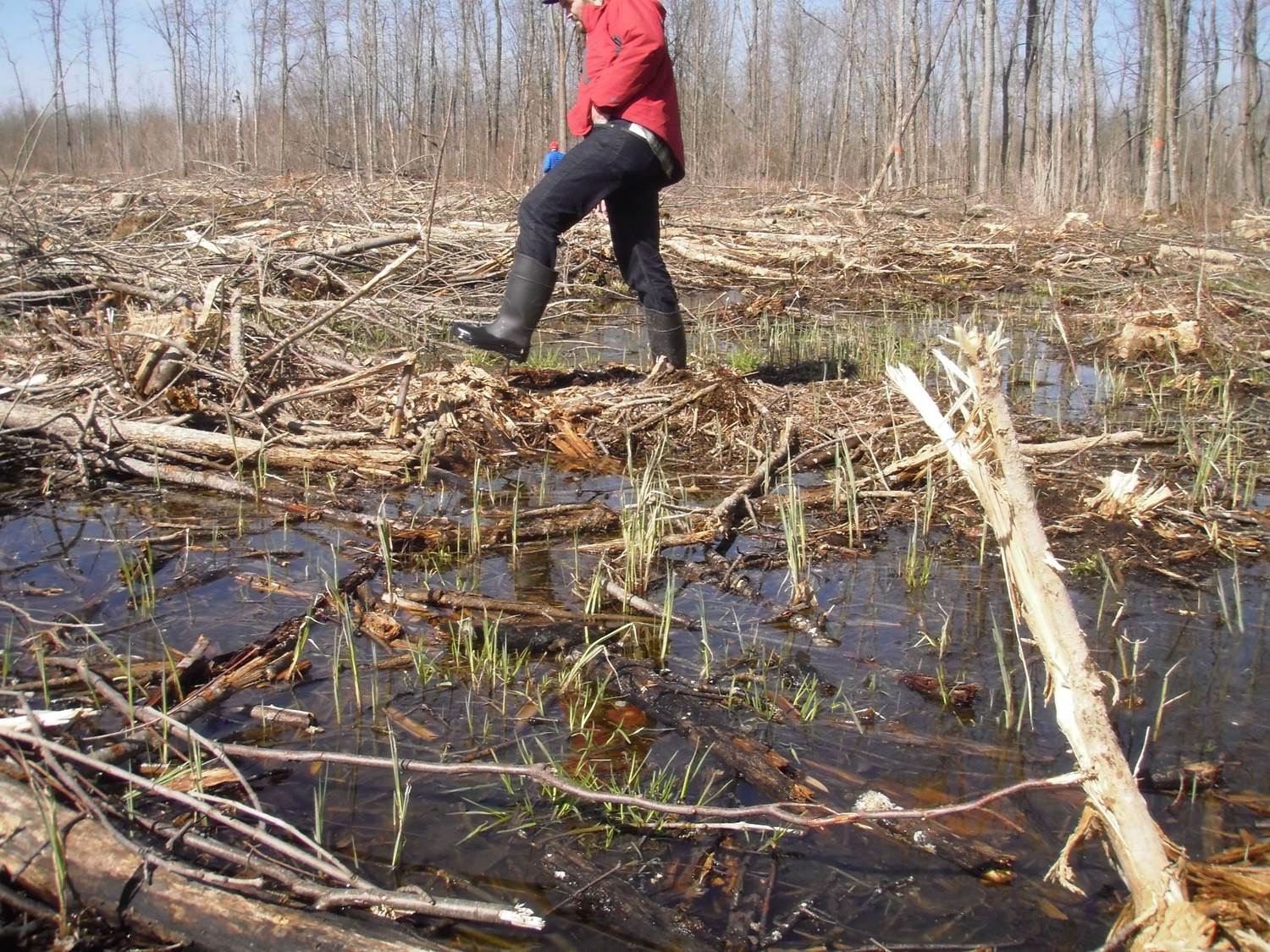
Figure 5: Clearcutting treatment immediately post-treatment (spring 2012)
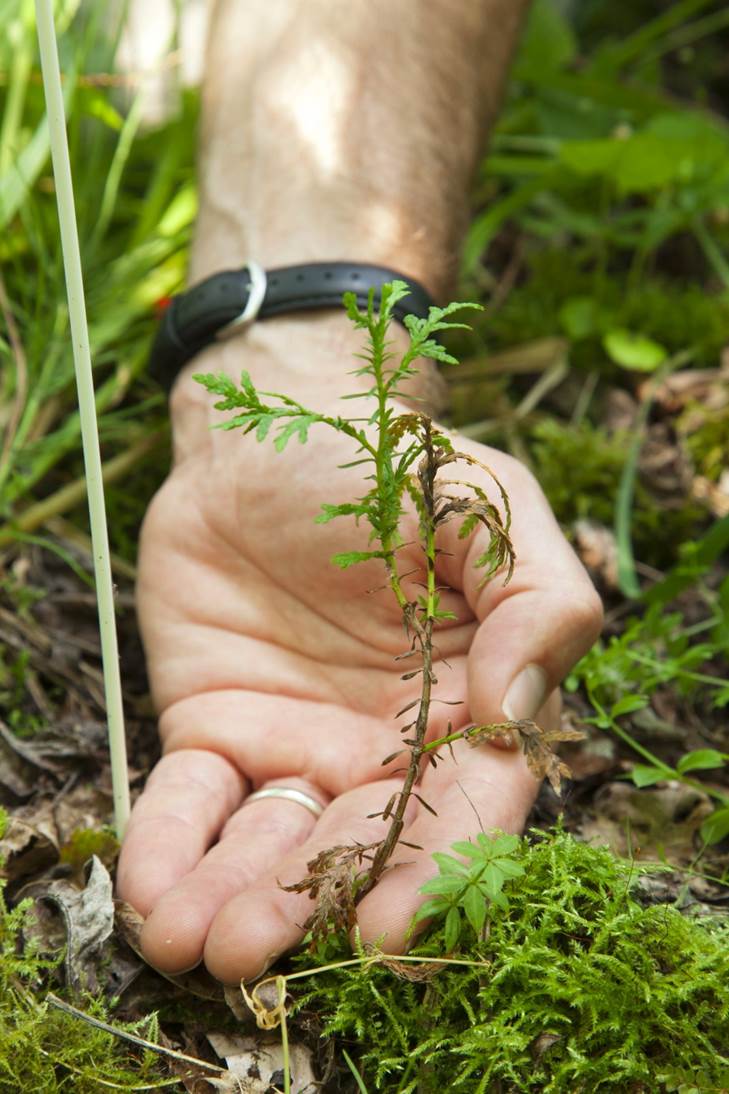
Figure 6: Fall planting (2011) and planted northern white cedar seedling in summer 2013
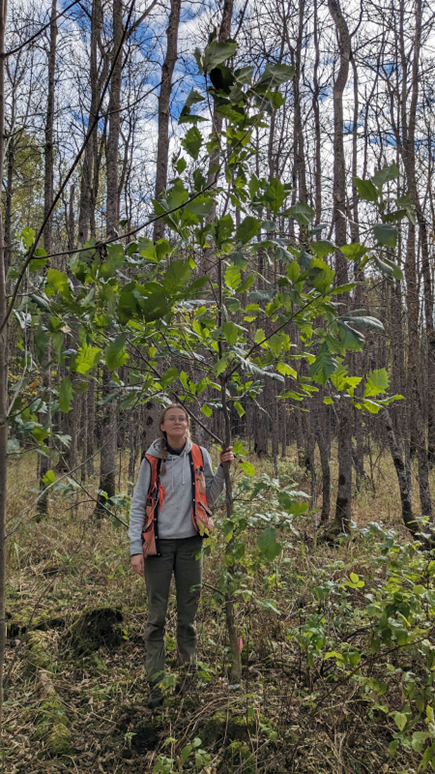
Figure 2024-8: Northern Research Station employee Alyssa Smits next to a Swamp White Oak in the fall of 2023.
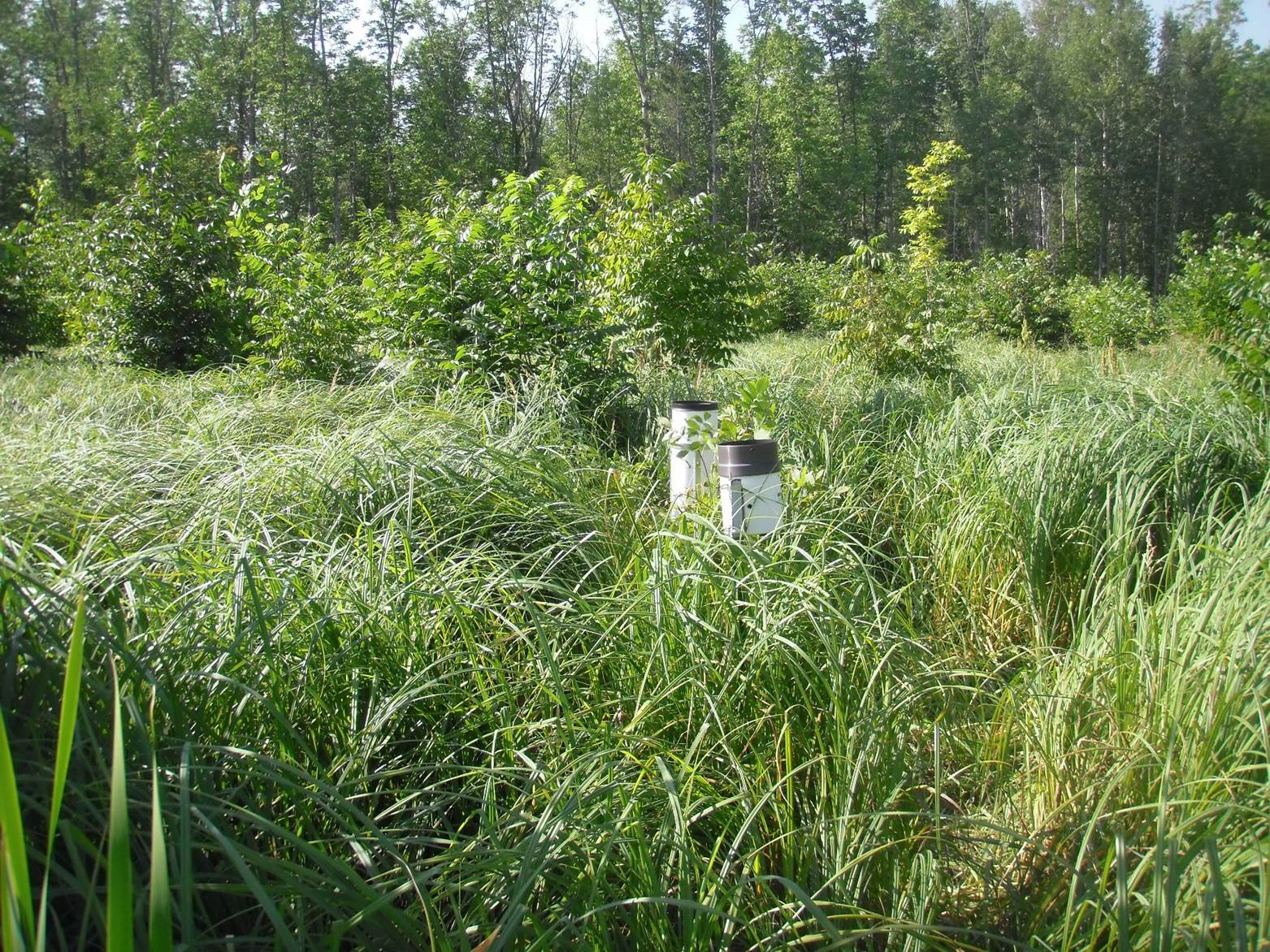
Figure 7: Clearcutting treatment with monitoring well in August 2013
2024 Update
Based on natural seedling density, established tree regeneration in the treatments was confined to six major species: F. nigra, U. americana, Q. macrocarpa, P. balsamifera, P. tremuloides, and T. americana. Figure 2024-1 displays the combined density of alternate replacement species that fell short of recommended stocking regardless of treatment, suggesting that these other species will not readily fill growing space vacated by F. nigra.
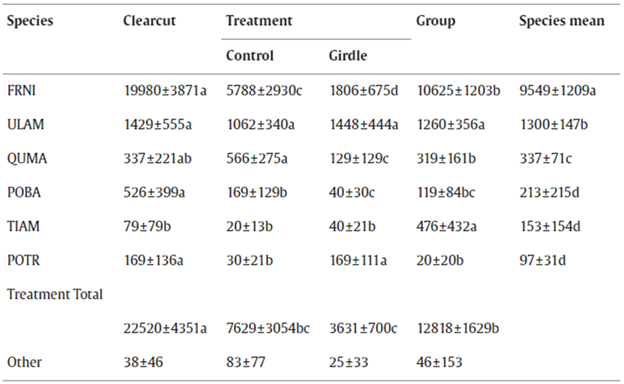
Figure 2024-1: Mean 2015 density (stems ha−1) of regeneration of woody species by treatment with potential to reach tree stature on F. nigra wetland forest study sites in northern Minnesota, USA.
In the fall of 2019 eighth year planted seedling growth and survival was assessed followed by a 2020 sampling of woody vegetation and overstory trees. The differences between planted species survival at year eight was significant in certain circumstances but the pattern was variable across treatments (Figure 2024-2). Overall the species with the highest overall survival across treatments was American elm, followed by swamp white oak. Trembling aspen, eastern cottonwood, northern white-cedar, and yellow birch, had low survival (generally below 5%) and small sample size, so were excluded from the analysis.
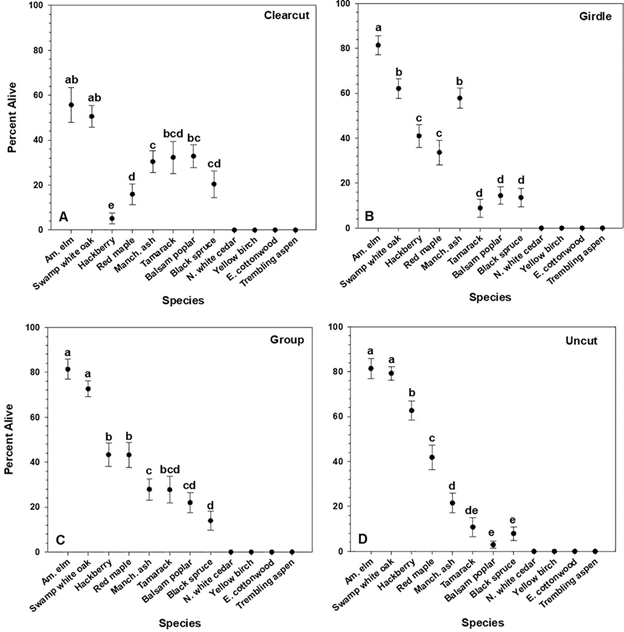
Figure 2024-2: Planted seedling survival after eight growing seasons by treatment and species.
Mean survival was similar among the uncut, girdle, and group selection treatments, while it was lower to some degree in the clear cut treatments. This being said, only the clear cut and group selection treatments were statistically different from one another (Figure 2024-3).
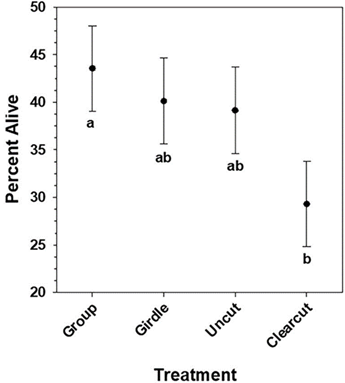
Figure 2024-3: Planted seedling survival after eight growing seasons by treatment. Values are adjusted means ± standard error (n = 8).
Species included in analysis of relative diameter growth (RDG) and relative height growth (RHG) rates included American elm, swamp white oak, hackberry, Manchurian ash, red maple and balsam poplar. Overall, the group selection treatment had the highest mean RDG and RHG, followed by the clearcut and girdling treatments, which had comparable growth, while mean RDG and RHG in the uncut treatment were lowest (Figure 2024-4).
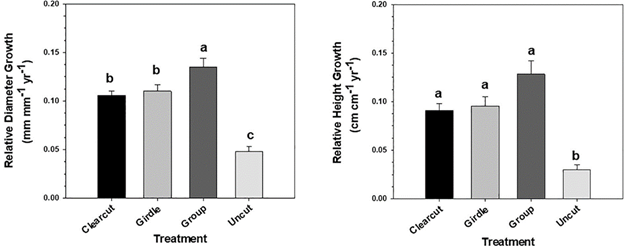
Figure 2024-4: Relative diameter and height growth rates over eight growing seasons by treatment. Values are means ± standard error (n = 8).
Diameter and height relative growth rates were significantly higher for balsam poplar than all other species in the clearcut, girdle, and group selection treatments, while the species had low growth rates in the uncut treatment (Figure 2024-5).

Figure 2024-5: Relative diameter growth over eight growing seasons of tree seedlings comparing species within treatments. Values are means ± standard error (n = 8).
It was expected that survival after eight growing seasons would parallel third-year results (Looney et al. 2015), specifically that overall survival would be lowest in the clearcut treatment and similar in the girdle, group selection, and uncut forest treatments. This expectation was confirmed, although only the clearcut and group selection treatments were significantly different from each other by the eighth year. The lower overall survival in the clearcut treatment likely reflects the dramatic changes in hydrology and herbaceous plant communities that result in challenging competitive and environmental conditions for tree seedlings
Of the six species analyzed for growth rates, four had their highest diameter and height growth rates in the group selection treatment, although sometimes only marginally higher than another treatment, including swamp white oak, hackberry, red maple, and balsam poplar. We hypothesize that over eight years, growth in the more open clearcut treatment, and eventually in the girdle treatment, may be inhibited by a higher water table, compared to the group selection treatment, which has a hydrologic regime that largely tracked that of the uncut forest.
EFFECT OF TREATMENT ON GROUND LAYER AND HYDROLOGY
Overstory treatment influenced both the height and composition of the herbaceous layer, with potential implications for tree seedling regeneration. Herbaceous layer height increased with decreasing overstory cover. Clearcutting had a dramatic influence on the structure of the ground layer resulting in a shift from herbaceous communities composed of a mixture of facultative and obligate wetlands species, to one now dominated by wetland graminoids, including lake sedge. Group selection harvests also increased the abundance of lake sedge and other graminoids in group openings; however, these changes were less pronounced and facultative species, including rough bedstraw, sweet cicely, and wood nettle still made up a considerable portion of the understory.
In the treatments that resulted in a loss of overstory such as group selection and clearcutting, the sun environment was changed a lot which affected both the ground layer as tree seedlings. In the areas of group selection with no overstory removal and the control plots, this effect was not observed and changes were driven by possible water table changes. In the clearcut, girdle, and group selection treatments, mean herbaceous layer height exceeded the height of the small and medium woody vegetation size classes in this study. Mean total herbaceous cover averaged over 200% in all treatments, which suggests that microsites where tree seedlings could escape herbaceous competition were rare.
Water table responses to the group selection treatments indicated that these initial entries did not increase the level of flooding in these areas relative to pre-treatment and control conditions. In contrast, clearcutting and EAB-simulation (girdling) treatments resulted in an average increase in flooding duration by 24 days. While the girdling treatments had a lesser effect on the water tables initially, as the stand aged and the trees lost their water holding capacity completely, the water table effect was more similar to the complete clearcut. These responses should be considered in the context of flood tolerance of potential replacement species being encouraged in ash-dominated stands. Based on the timing and depth at which the treatments modified the WT for two years, risk of vegetation shifts and ecosystem alteration are greatest with simulated EAB mortality and clear-cutting and lowest with the group selection treatment. Based on these early results, the group selection technique appears to be a suitable strategy to attempt modification of stand composition to other forest tree species prior to EAB infestation, while reducing risks of water table rise and ecosystem alteration.
Plans for future treatments
Future treatments in these areas will include another entry in the group selection treatment 15-20 years after the initial entry. Additional plantings will occur with future management as well as evaluation of seedling protection from browse in some treatments. During the summer of 2023 a carbon sampling assessment was completed on forest soils, above ground vegetation and woody debris.
Costs and economic considerations
The cost for laying out treatments and planting was $135/acre. On a per acre basis the CNF received $140/acre on the group selection treatments. The nursery stock costs were roughly $1562 for 4224 trees across the group selection treatments. Additional harvest and planting will be evaluated for their associated costs and economic considerations. Managers may consider planting larger stock to favor greater survival related to effects of competition and browse.
Other Notes
Works cited
Brian J Palik, Anthony W D’Amato, Robert A Slesak, Wide-spread vulnerability of black ash (Fraxinus nigra Marsh.) wetlands in Minnesota USA to loss of tree dominance from invasive emerald ash borer, Forestry: An International Journal of Forest Research, Volume 94, Issue 3, July 2021, Pages 455–463, https://doi.org/10.1093/forestry/cpaa047
Looney, C. E., D'Amato, A. W., Palik, B. J., Slesak, R. A., & Slater, M. A. (2017). The response of Fraxinus nigra forest ground-layer vegetation to emulated emerald ash borer mortality and management strategies in northern Minnesota, USA. Forest Ecology and Management, 389, 352-363.
Palik, B. J., D’Amato, A. W., & Slesak, R. A. (2021). Wide-spread vulnerability of black ash ( Fraxinus nigra Marsh.) wetlands in Minnesota USA to loss of tree dominance from invasive emerald ash borer. Forestry: An International Journal of Forest Research, 94(3), 455–463. https://doi.org/10.1093/forestry/cpaa047
Slesak, R. A., Lenhart, C. F., Brooks, K. N., D’Amato, A. W., & Palik, B. J. (2014). Water table response to harvesting and simulated emerald ash borer mortality in black ash wetlands in Minnesota, USA. Canadian Journal of Forest Research, 44(8), 961–968. https://doi.org/10.1139/cjfr-2014-0111
Summary / lessons learned / additional thoughts
Based on the initial responses to this prescription, group selection appears to be a viable option for establishing non-ash species in black ash wetlands (WFn55 and WFn64) communities. The high survival rates of seedlings in the girdle and control sites also suggests that other regeneration methods, such as individual tree selection or shelterwood methods, that rely on overstory ash to buffer hydrologic responses and minimize understory competition may also be viable options in these communities. We found that generally there is very low potential that other tree species will readily replace black ash naturally from either expansion in the overstory or through release of advance regeneration from lower vegetation layers.
While we relied primarily on planted seedlings, additional work using direct seeding could be evaluated given the logistical challenges with planting in these systems. Finally, the high success of more southern species, namely swamp white oak and hackberry, argues for thinking broadly regarding suitable species for addressing the challenges posed to these forest types by EAB and future climate change.
